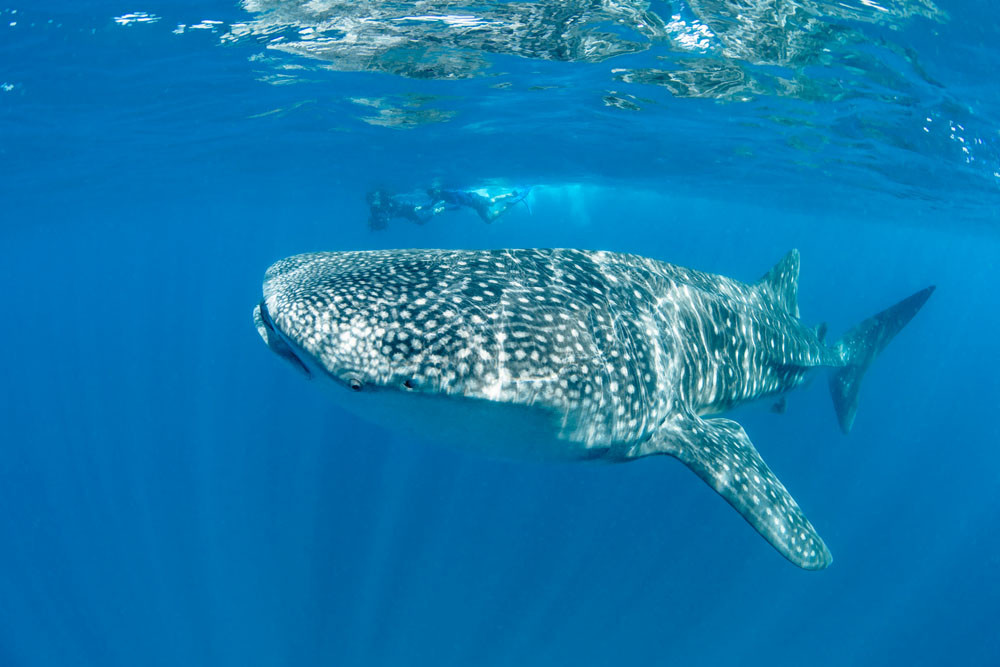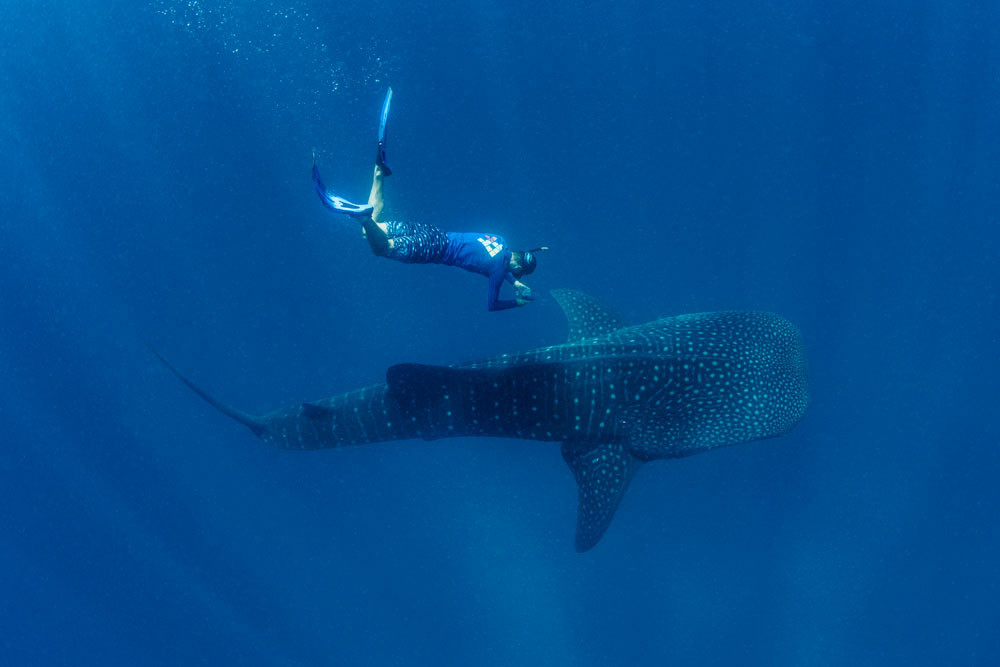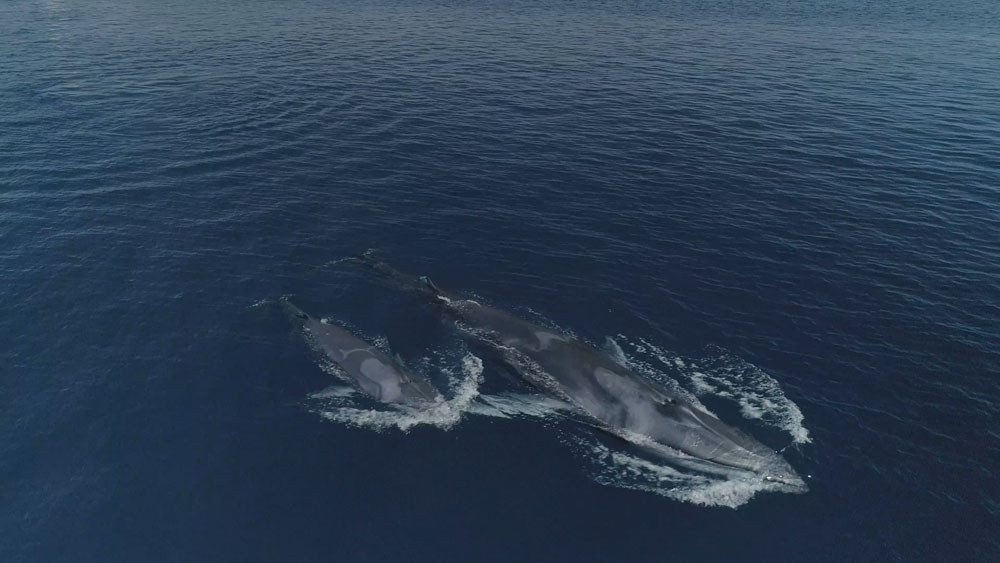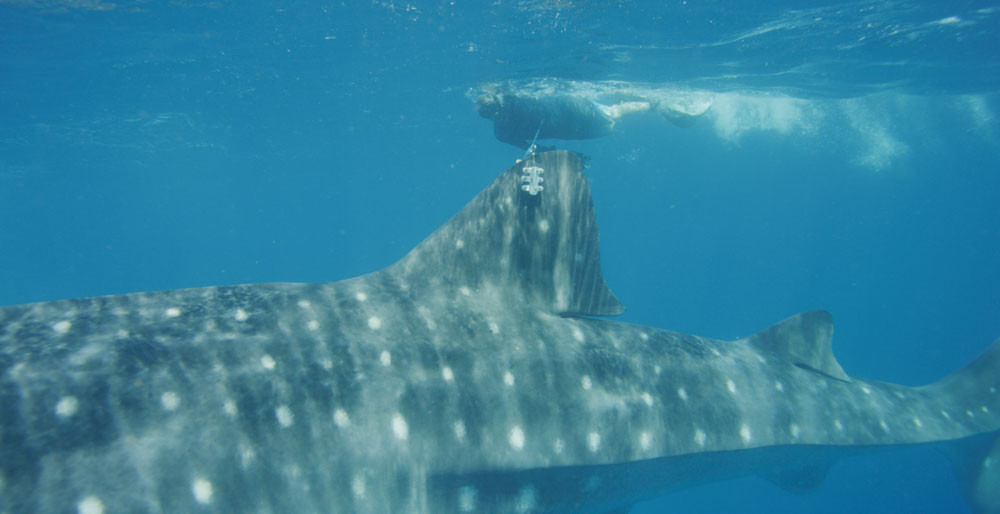General News
29 December, 2022
First whale shark tracked by satellite for a year on the Reef
THIS past month marked 12 months of continual satellite tracking of a whale shark tagged in the Far North of the Great Barrier Reef.

The tracking was part of a study conducted by Biopixel Oceans Foundation to research some of the biggest animals in the most remote part of the Reef.
Initial research started five years ago with seed funding from the ‘Run for the Reef’ marathon.
“Initially, we thought finding an aggregation was like trying to find a needle in a haystack even though we were looking for the largest animals on the reef,” Senior researcher Dr Adam Barnett said.
“However, by looking at historical records and oceanographic information, we took the best guess at the timing and location, and it paid off,” he said.
Using a combination of spotter planes and drones, the tagging team would speed to the location of the animals on a tender from the charter vessel Argo. The team successfully tagged ten whale sharks.

“Historically, whale shark satellite tags only last a few months, but upon a shark called ‘Ali’, we have our first 12-month track,” Dr Barnett said.
“After leaving Wreck Bay, Ali swam out into the Coral Sea, up to New Guinea and now has returned to the location where we first tagged her.
“We are still hoping for a few more pings from Ali’s sat tag.”
The team identified that the whale shark aggregation was of mixed sex which is unusual for known aggregations worldwide.
The study has also confirmed the presence of another large plankton eater, the Omura’s whale. This species, growing to over ten metres long, was only described in 2003.
The team was able to observe these whales feeding on rafts of plankton and swimming with calves using drones under special permits.

The far north of the Great Barrier Reef is now the second only known aggregation point for these whales in the world.
The first known location is in Madagascar. Senior Researcher Richard Fitzpatrick said the tracking would help them identify patterns and migration events.
“The reason these large plankton feeders are showing up at these locations in the Far North of the Great Barrier Reef in the summer months is to feed on plankton,” Mr Fitzpatrick said.
“During these summer months, upwelling events can occur, bringing up cooler water from the depths and the associated plankton.
“It is essential for us to know when and where these events occur as it can identify areas of the reef that may be more resilient to climate change.
“We are using Whale sharks, Omura’s whale and even Manta rays to teach us about these upwellings,” he said.

Dr Barnett said the research would open many more opportunities to learn from these creatures.
“This is just the beginning of the research on these animals,” he said.
“Now we know where to find them; we can start deploying more advanced technology and bring in other researchers from other disciplines, such as oceanography and plankton specialists, to learn more about these upwellings.”
It is hoped that further funding from corporates and NGOs and support from Traditional Owner groups and state and federal government will allow this research to expand.
This latest expedition, conducted by Biopixel Oceans Foundation, was funded by Swiss watchmaker Blancpain and the Slattery Family Trust.
The research was conducted in collaboration with Marine Mega Fauna Foundation, Ecocean, Project Manta and Citizens of the Great Barrier Reef.


